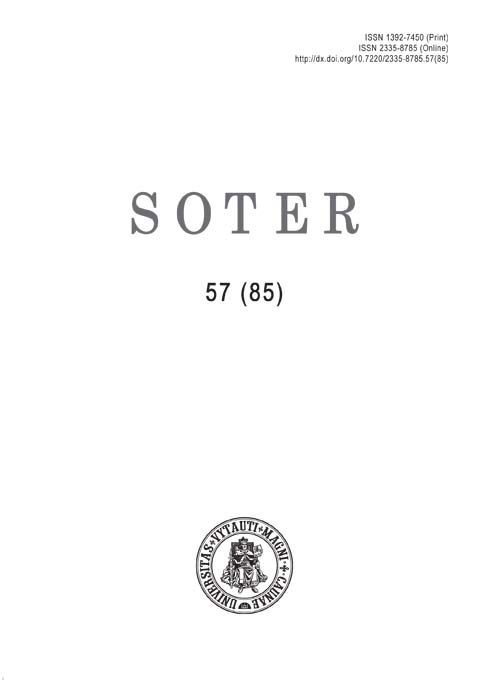
We kindly inform you that, as long as the subject affiliation of our 300.000+ articles is in progress, you might get unsufficient or no results on your third level or second level search. In this case, please broaden your search criteria.

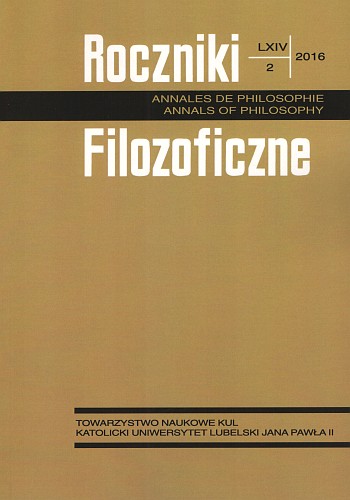
Contemporary philosophical studies on creativity of humans are not narrowed only to the descriptions of the geniuses’ lifes and to the aesthetical analyses of the original artifacts. With the modern extension of the creatio concept (which is now often understood as an universal ability of all men to create), the enlargement of the possible studies to be done in the field od philosophy of creativity have appeared also. At the same time—the new dilemmas to solve have come out.In the present article I show the diversity of contemporary research on the creativity phenomenon by (1) delineating the main opposition voices in this research and by (2) describing some of the leading trends in the field. There will be raised such problematic issues as: elitism vs. egalitarianism of creativity, the place of consciousness and rationality in the creative processes, the nature of the scientific creativity, the intercultural perspective in the research, naturalizing the phenomenon and also the possible functions of the imagination and pretend play in shaping the creative abilities of humans.
More...
In the first part of the article, the author delineates the first interpretations within the early romantic movement that pointed out that we can no longer regard classic works of art as the best representations of artistic achievements, but rather as untimely contibutions that detracted from genuinely new art forms. The main purpose of romantic questioning of the works that were accepted as exemplary was to devote particular attention to epochal changes in the very essence of art. Given that the classical works are stable, rounded out and complete, the early romantic age particularly favoured works in which tension, incompleteness and fragmentariness predominated. The second part of the paper discloses a transformation of the concept of tradition after the inherited classical patterns have lost their previous role as regulative and normative principles of art. The concept of »postclassical« tradition was thematized in order to elucidate motives thanks to which we may speak about the common anticlassical tendencies of both phenomenology and early avant-garde.
More...
The paper presents an investigation on aesthetic principle of individuality and visualization of individual beauty. Author analyzes female portait in fine arts of ancient Egypt, Greek and Rome and in this context both relationship between individual and paradigmatic and problem of personal identity visualization.
More...
This essay focuses on the modern concept of aesthetics formulated in German Enlightenment by A. G. Baumgarten. It stresses Baumgarten’s notion of science of sensitive knowledge and exposes his thesis, namely, that aesthetics, like rhetoric and poetics, should be concieved as an ars inveniendi, or a method of invention of arguments, which enables discovery of truth. Philosophical aesthetics should formulate principles for understanding the complete phenomenal world, everything that is being judged through the senses and feeling, not only art. It should direct sensitive knowledge towards the truth. Therefore, imagination is a cognitive power that enables us to judge art and beauty, it is a leading sensitive capacity for judgments of taste and aesthetic judgments in general.
More...
The inquiry is guided by the question concerning the nature of the relation between Hegel’s understanding of romantic form of art as the art of Christian world and his critique of the central aspects of poetics of German Romanticism – which was the spiritual movement that were led by Hegel’s contemporaries. Following the comparison of Hegel’s and Romanticists’ consideration of the need of art and the overview of Hegel’s characterization of romantic form of Ideal, the author of this paper tries to point out the possibility that according to Hegel the basis of poetics of German Romanticism, particularly the romantic theory of irony, could be understood as the Christian and as the non-christian simultaneously. These basis are Christian inasmuch as they radicalise consciousness of the limits of the form of art as such. They are insufficiently Christian because they generalize finitude of that form and do not permit the higher realization of the spirit.
More...
One of Benjamin’s key notions is a well-known assertion about the death of the aura, which comes as a result of the possibility of the work of art to be reproduced. That also means that our experience is inevitably changing with the process of modernization. The main goal of this paper is to consider the actual worthiness of these notions, and Benjamin’s legacy as well. That significance, among others, lies in providing better and more proper understanding of contemporary artistic practices.
More...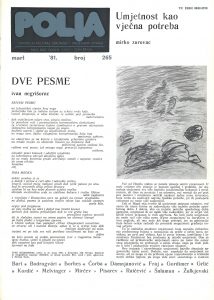
Razgovor o nekim temeljnim pitanjima estetike, teorije o stvaralaštvu ili bilo kojoj relevantnoj teoretskoj tematici, ima samo onda smisla ako ostane na problematskoj razini određene teze o kojoj se raspravlja. Bio sam stoga vrlo zadovoljan, pa i počašćen time što je moj članak »Estetika i teorija o stvaralaštvu « potakao jednog vrsnog, svjetski poznatog estetičara, odnedavno i sekretara međunarodne organizacije estetičara, da se osvrne na neke moje stavove. Nisam, dakako, jer poznajem njegov rad, djelovanje, čitav način mišljenja, pa i teoretske domete, očekivao da ćemo moći raspravljati o bitnim pitanjima, ali to za samu stvar doista nije presudno, jer određena teza može često upravo putem nekih usputnih antiteza, ukoliko su ozbiljno argumentirane, dobiti na teoretskoj relevantnosti i imati perspektivu višeg osmišljenja u sintezi.
More...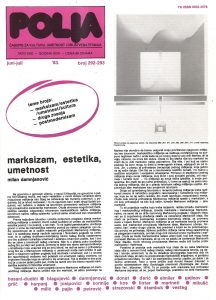
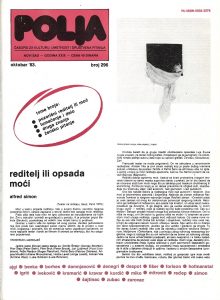
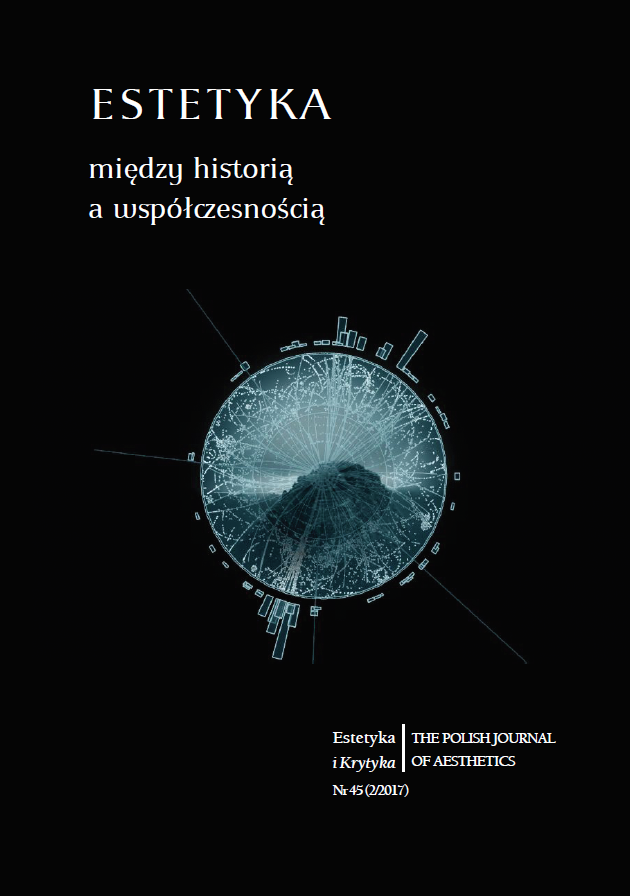
The smell and the sense of smell is one of the most undervalued senses which define our relationship with the outside world. As the sense of “contact” it confirms the materiality and the reality of the world; as a “practical” sense, it gives us the basic orientation in the world. The sense of smell plays a key role in the evaluation of the environment and the way we situate themselves in it and experience it multi-sensory. Everything that surrounds us give out a smell that we perceive as pleasant or unpleasant, arousing pleasant associations or disgust. We react to it by the power of first impressions. Its cultural validity confirms two-step process of deodorisation – i.e. elimination unpleasant odours from the public and private space and aromatisation – introducing artificially produced pleasant smells. Smell surround us and affect the evaluation of the environment. In this sense, the smell identifies a place. The association of ephemeral smell with atmospheric of a place indicates that the smell should be recognized as an important element of the atmosphere introduced by G. Böhme.
More...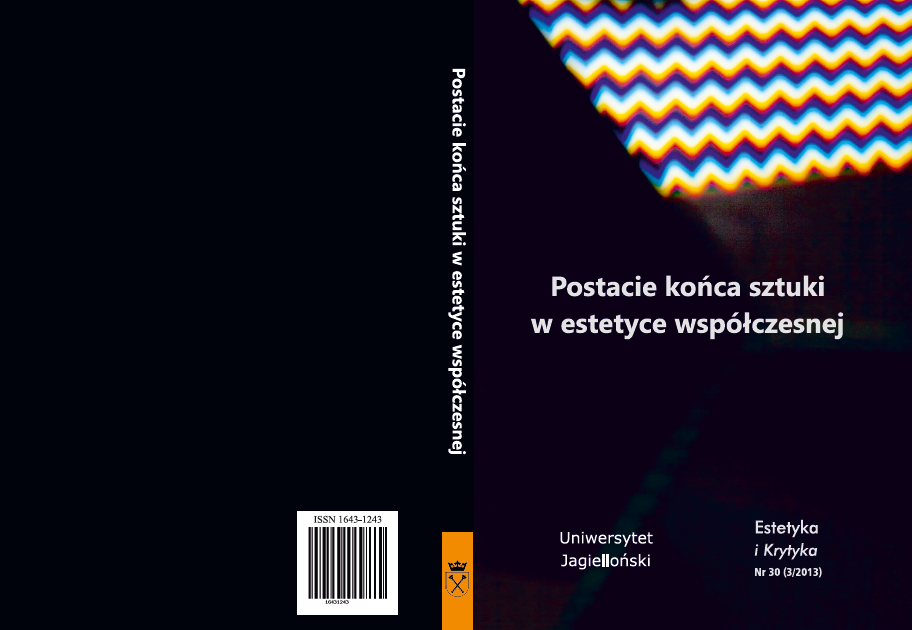
The following text is an introductory to the issues included in the volume, and is focused on understanding history and two of its important concepts: progression and regression. Both of these concepts played an important part in understanding history, attributed to its sense or nonsense.
More...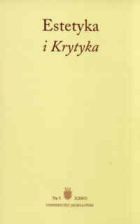
Although beauty has never been a mainstream sociological topic, it is not true that sociologists have not been interested in social aspects of aesthetics. Traditionally, however, sociological and philosophical approaches towards beauty have excluded each other. The article challenges the assumption made by Pierre Bourdieu that sociologists should reject philosophical concepts of beauty. On the contrary, it searches for sociological implications of philosophy. The article presents the thoughts of Theorstain Veblen, Herbert Blumer and Georg Simmel and stresses the similarities between their theories and the philosophical concepts of beauty as clarity, beauty as integrity, and beauty as harmony.
More...
Dealing with beauty today is primarily not an issue of arts and art theory, as the first generation of the 20th century avant-garde dislodged beauty from arts, basically due to the moral weight assigned to it. After a predominantly anti-aesthetic climate of art theory since the early 1980s, aesthetic matters have witnessed a strong return in philosophy and art theory in the last fifteen years. After reviewing the complicated connection of the aesthetic and the so-called anti-aesthetic critique of art, I examine how these two tendencies may be reconciled in today’s art and in its interpretation. The term anti-aesthetic is associated with Hal Foster’s edited volume The AntiAesthetic (1983) that labeled theoretical positions which defined themselves radically against a Greenbergian theory of art. Foster and his peers identified in a polemical way Greenberg’s medium-specifity and his insistence on taste with aesthetic approaches, and they put forward a more social and political-based critique of art instead. In the 1990s, the art practices and theories of the abject and the informe further strengthened this opposition in spite of the emergence of new theories of beauty. The return of aesthetics into the art discourse is along the line of the interpretation of modernity; the way in which „nonart” and „anti-art” tendencies have been necessarily interlocking since then, and how the intrinsic transgression of art is turned back into its own logic.
More...


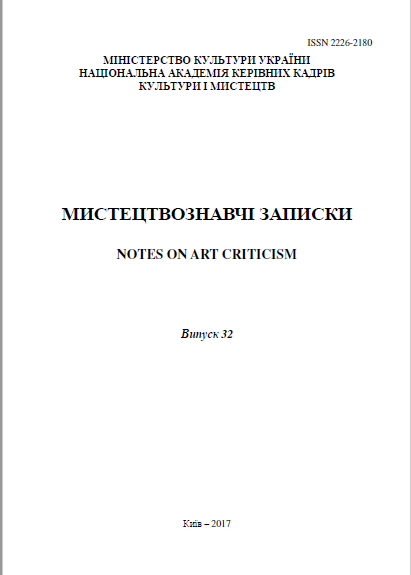
The goal of the work is describing some algorithms of worldview and figurative creation as a way of visual presentation of «world picture». In the mentioned context, figurative art is seen as a system of reality exploitation through the exceptional needs o f the individual structuring information, and its fixing in art practices. Methodology. The methodological basis of the study is general scientific and cultural methods of the study which are used to understand the relationships between historical reality changes and different forms of art processes. Scientific Novelties. In the article, the art is described as an open polystylistic structure in which formative process of art action is universal representative of worldview content. ».
More...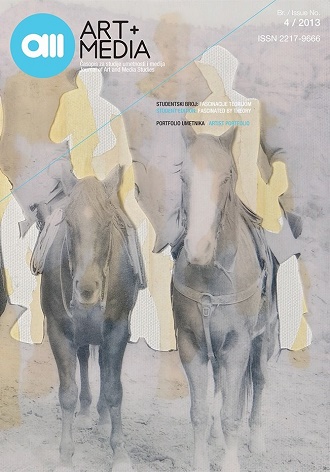
Contrary to traditional liberal thought that perceives the idea of multitude as a negative category which implies private sphere deprived of public presence or public voice and which designates singularized individuals as mute or invisible to/in community and alienated or expelled from otherwise united nation/state, the contemporary notion of multitude balances between binary oppositions private-public, individual-collective. This contemporary notion is not opposed to the idea of nation as a unified community/collective, but is itself determined by a different form of unity that precedes it – the general thinking ability or, as Paolo Virno calls it, the general intellect. This paper explores possibilities of contemporary collectives (as temporary unification forms of the multitude) to oppose and resist exploitation of the general intellect in neoliberal capitalist societies.
More...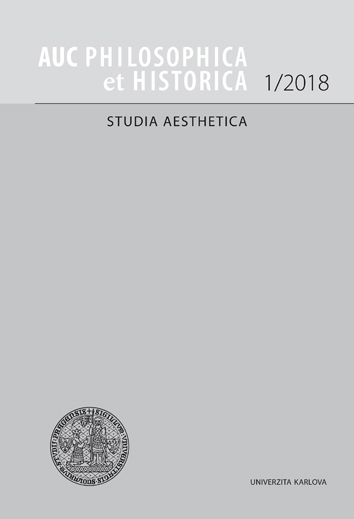
Slávka Kopčáková (ed.), Ladislav Burlas a slovenská hudobná kultúra, Filozofická fakulta Prešovskej univerzity v Prešove, Prešov 2017, 239 s.ISBN 978-80-555-1780-3
More...